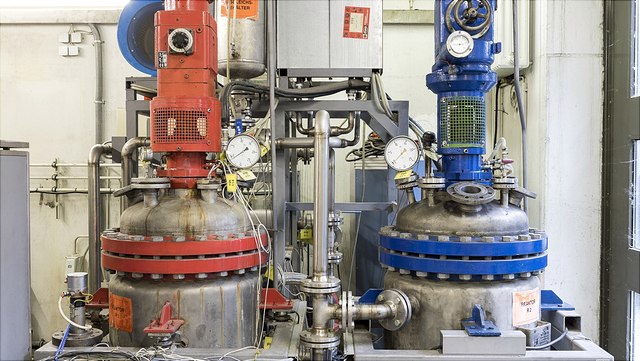Polymerization technology
Synthesis of concentrated nanoscale emulsions
By polymerization in heterogeneous phase, latex particles can be produced in the nanoscale range. Heterogeneous polymerization, especially in an aqueous medium, offers advantages over homogeneous polymerization. No volatile organic solvents (VOC) are present, control of heat dissipation is better possible and polymers with a high molecular weight are obtained at high conversions and a fast polymerization rate. The motivation to produce nanoscale particles and materials is that these materials have improved or completely different properties than the bulk materials. By reducing the particle size, the number of molecules on the surface is increased, so that properties that were determined by the molecular structure of the solid are now increasingly determined by the structure of the surface. The properties of the materials, such as electrical, optical, chemical, mechanical or magnetic properties, can be selectively controlled by varying the particle size, surface area or composition.
Micropolymerization studies
Micropolymerization combines three process steps: shaping, reaction and drying. The substance is dripped and reacted in the continuous drop tower reactor. The principle can be applied to many different polyreactions, such as radical polymerization, polycondensation and polyaddition. Within the scope of the doctoral thesis, different systems will be investigated with regard to their suitability for micropolymerization.
Homo- and copolymerization of classical emulsions in tube reactors
In the chemical industry, continuous processes are preferably used for large product volumes. They are usually superior to discontinuous processes with regard to space-time yield, constant product quality and hazard potential. Nevertheless, emulsion polymerizations are predominantly carried out in semi-batch processes, since, among other things, the formation of deposits in the stirred tank requires regular cleaning, tube reactors become clogged by fouling or the phases in the unstirred tube are segregated.
Synthesis of co- and terpolymers and scale-up of organic synthesis strategies
The aim is the development of synthesis strategies for the structuring of functionalized polymers. Co- and terpolymers are produced on the basis of novel monomers. The developed synthesis strategies are then transferred to the 3 L or 6 L scale. It is necessary to check whether the synthesis strategies developed on a laboratory scale are suitable for the large-scale production process.

